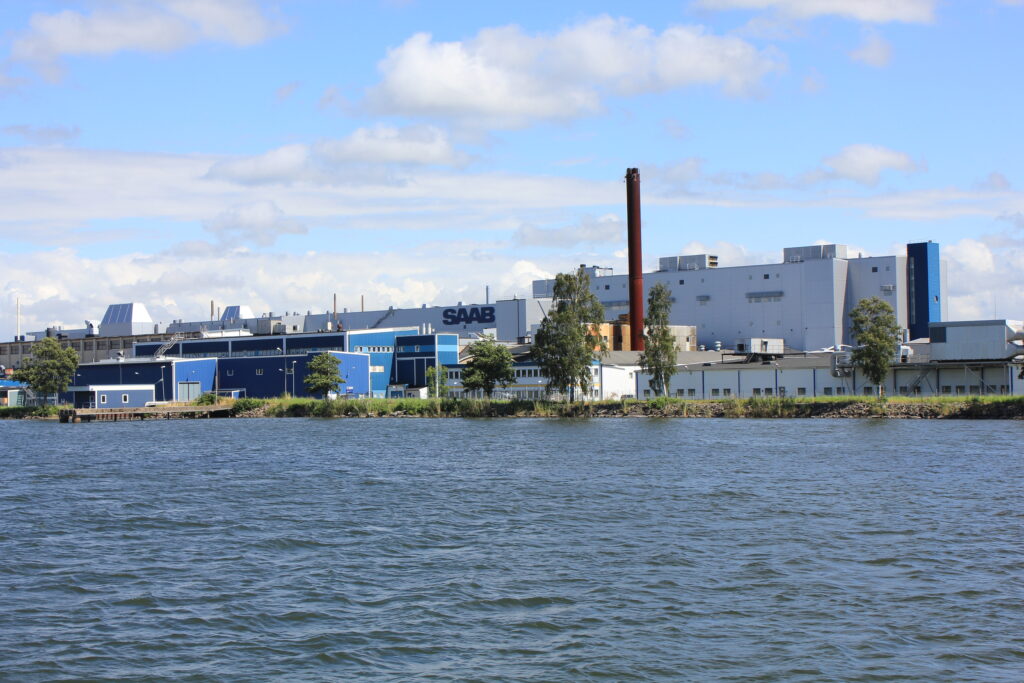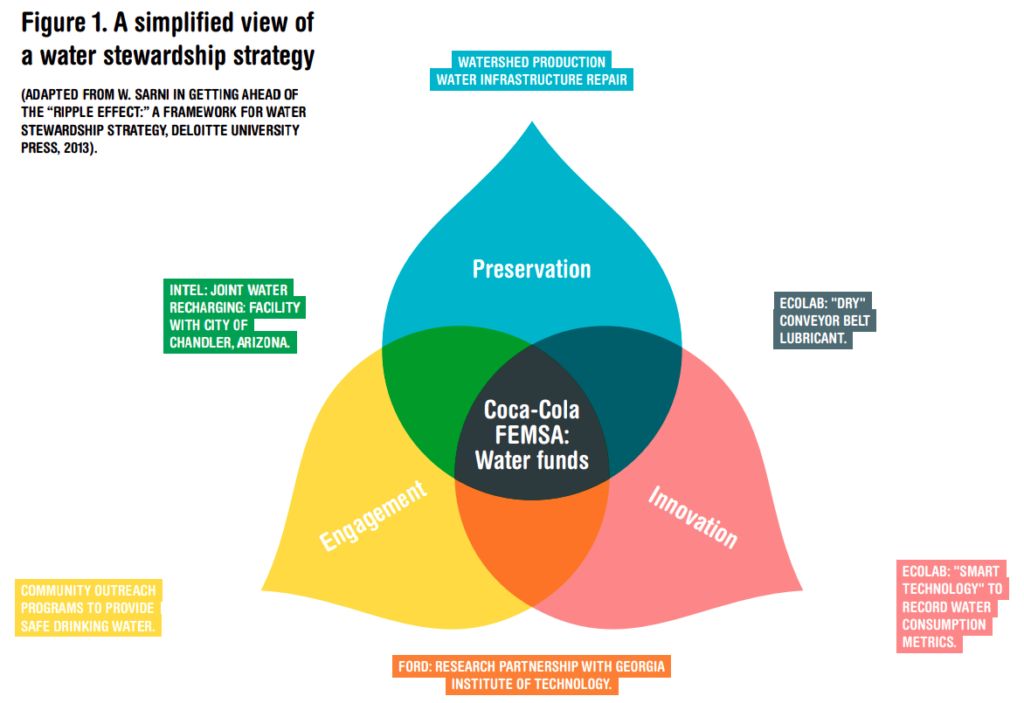Water Stewardship: Creating 21st Century Abundance
Corporate water strategies to address water scarcity and quality range from managing water risks within direct operations to more expansive strategies to address water risks across a company’s value chain. These expansive strategies are referred to as water stewardship which now refers to moving beyond water management whereby companies are working with their supply chains, customers and consumers to address water risks. For many of these companies they are focused on watershed level programs to have a positive impact beyond their value chain footprint.
Let’s examine the current state of water stewardship and explore strategies that add value and impact beyond water stewardship to create abundance from scarcity.
Water stewardship is a generally-accepted term for the proactive adoption of an economically, environmentally, and socially-responsible water strategy. Water stewardship strives to achieve water security for all stakeholders, including ecosystems within a watershed. Water stewardship emphasizes effective resource sharing as well as efficient resource use, and seeks to engage stakeholders across the value chain, collaborating with suppliers and/or customers (including end users) to help manage their collective risk.
There are several non-governmental organizations and consulting firms that have developed water stewardship frameworks and published articles on the value of water stewardship. These include WWF, The Nature Conservancy (TNC), IUCN, WRI, World Business Council for Sustainable Development (WBCSD), the CEO Water Mandate, The Pacific Institute and The Alliance for Water Stewardship. Leading businesses work with these NGOs to develop practical and cost-effective water stewardship strategies to address water scarcity and its related impacts. These impacts include constraints on economic growth and the public health effects of limited access to clean water.



A very simple view of water stewardship which aligns with WWF and other frameworks such as AWS can be found in Getting Ahead of the Ripple Effect: A Framework for Water Stewardship Strategy (Deloitte University Press, 2013) which is a simplified view of both the risks and opportunities in implementing a water stewardship strategy. With regards to risk, a water stewardship strategy should give companies the ability to anticipate, manage, and mitigate current and potential impacts, such as higher water costs, disruption to water-dependent operations, evolving regulatory and pricing changes, and loss of social license to operate.
The framework is straightforward and consists of preservation, engagement and innovation (Figure 1). Preservation includes activities that reduce impact on water resources by decreasing water consumption and/or preserving water quality. Engagement refers to water-related activities that involve stakeholders outside the company itself. And innovation is defined as the creation and/or adoption of new technologies, processes, and/or partnerships to pursue water-related goals. The Alliance for Water Stewardship (AWS) has developed a water stewardship standard that is gaining traction globally:
AWS is a global membership-based collaboration. We unite organizations behind our mission: To lead a global network that promotes responsible use of freshwater that is socially and economically beneficial and environmentally sustainable.
We achieve this through a global water stewardship system, centered on the International Water Stewardship Standard (the AWS Standard), that drives, recognizes and rewards good water stewardship performance.
Our vision is that water users and managers are responsible water stewards, who protect and enhance freshwater resources for people and nature.
The AWS Standard provides a globally-applicable framework for major water users to understand their water use and impacts, and to work collaboratively and transparently for sustainable water management within a catchment context.

Another study of water stewardship, Water Management and Stewardship: Taking Stock Of Corporate Water Behavior (Newborne and Dalton, 2016) highlights the state of water risk and mitigation strategies. According to Newborne and Dalton: multinationals are better at understanding the “water-related contexts in which they operate” and a “few leaders” are beginning take actions as to how they manage water, but they are “mostly investing in water infrastructure within their own plants/premises.” Newbourne and Dalton go further and state that “companies need to be aware of, and adaptable to, water issues beyond the fenceline. The examples of the greater level of engagement in collective action are, currently, exceptions to the general rule.
How do companies with ambitious global growth strategies secure the water they need to fuel business growth in a world where paying more for water will not work?
Below are a few other key takeaways from Newborne and Dalton’s report that provide invaluable insights into the state of water stewardship adoption:
- Companies talk about “win-wins” and not about trade-offs. In the world of water resource governance with competition for water, trade-offs are the norm, resulting in negotiated agreements with compromises. “Win-wins” are misleading and do not reflect the complexity of managing water resources within a watershed.
- The tension between short-term business goals and long-term business uncertainty manifests itself in the status of water as “a medium risk, but low priority, to (increasingly) a medium (or high) risk and medium (or high) priority.” This is coupled with a lack of real interest from external stakeholders, such as “regulators, investors and consumers, who do not seem to be significantly influencing corporate water behavior.”
- Reporting and disclosure are voluntary and there is a strong case to be made for regulated initiatives and scoring to support the financial sector, NGOs and other stakeholders. It appears that we are still a long way off from a time when companies will report on water risks and mitigation strategies; companies are still lagging on reporting on climate risks let alone water-related risks.
Newborne and Dalton conclude that “in relation to water and natural resource management, that means companies need to show how they are changing their business models and practices – and do so soon.”
While several water stewardship frameworks address social license to operate, they really do not directly address the challenge of sustainable business growth. One of the more important questions is: how do companies with ambitious global growth strategies secure the water they need to fuel business growth in a world where paying more for water will not work?
This question was addressed in “Fueling Growth” (Deloitte, 2014) that claims that for companies to capture additional value from water stewardship they must align with their growth strategy. This means moving beyond the price of water to take into account the various impacts of water on operations, value chain, brand, and growth prospects. As framed in the article, companies can be categorized in four stages of maturity as to how they align (or do not align) business growth to water availability (Figure 2).
The maturity model can be summarized as follows:
- Stage 1 (No Strategy): No stakeholder engagement; limited water efficiency investments; no alignment of water strategy with business growth strategy.
- Stage 2 (Efficiency Strategy): Focused on water efficiency (water price drives actions); no stakeholder engagement; no quantification of the value of water.
- Stage 3 (Risk Strategy): Risk focus; targets are set for water efficiency/reuse; pursues stakeholder engagement focused on managing social license to operate; limited understanding of the value of water as a driver for investment decisions to support growth; limited alignment of water strategy with business growth strategy.
- Stage 4 (License-To-Grow Strategy): Growth focus; mature efficiency/reuse initiatives; leads stakeholder engagement initiatives focused on securing long-term access to water; quantifies the value of water (and business value at risk) to drive CAPEX/OPEX investments; water strategy well aligned with business growth strategy.

While water stewardship creates value and impact, what strategies could potentially create greater value and impact? What is beyond water stewardship and how do we create abundance from scarcity?
Beyond Water Stewardship
Innovation is the next phase of water stewardship which has the potential to create additional value in economic development, business growth, social well-being and ecosystem health.
Innovation will take us from 19th and 20th-century public policy and infrastructure to 21st-century solutions by leveraging exponential technologies (such as material science, internet of things, etc.), crowdsourcing and prize competitions (for example: ImagineH2O), innovative business models (like water as a service) and financing (with green bonds and socially responsible investing), and new stakeholder ecosystems (such as The Coca-Cola Company’s Replenish Africa Initiative – RAIN).
Let’s focus on ways to promote innovation and scale solutions in these areas of innovation. The most exciting developments are in water technology innovation hubs/accelerators and programs that bring in entrepreneurs from outside the water sector. There is significant promise in the ability of these hubs/accelerators and entrepreneurial programs to solve water scarcity and quality impacts.
We are still a long way off from a time when companies will report on water risks and climate mitigation strategies.
Two organizations that I have been involved with are ImagineH2O (www.imagineh2o.org) and 101010 (www.101010.net). ImagineH2O is a water technology accelerator that in addition to an annual prize competition, supports the scaling of innovative technologies for the private and public sectors. 101010 is an innovative program that brings together 10 entrepreneurs for 10 days to address 10 “wicked problems” (Water as a Wicked Problem). In October, 101010 ran a Cities – Infrastructure and Water Program and watch for ImagineH2O 2018 Accelerator Program.
We should view water strategy more broadly to include the value created from leveraging exponential technologies (IoT and nanomaterials), new financing models (green bonds) and frameworks (closed loop value chains). If the private sector can be tapped to drive innovation, we will be in a better position to address 21st century water risks. More importantly, we can collectively create economic, social, business and environmental value.
To bring this to scale, recommendations will need to address the following:
- Shifting our thinking from water scarcity to abundance to attract new ideas and stakeholders to solve complex (‘wicked’) water challenges.
- Scaling innovation and entrepreneurial programs such as 101010 and prize competitions such as ImagineH2O.
- Developing and implementing new financing models such as blended finance.
- Leveraging the speed and scale of entrepreneurs and multinationals to invest in water solutions in addition to their water stewardship programs.
- Proactively engaging with successful entrepreneurs and businesses from outside the water sector.

WATER FOUNDRY TEAM is a trusted advisor to multinationals, non-governmental organizations, public sector agencies and innovative water technology companies in the development and implementation of water strategies. These strategies range from corporate water strategies, public policy to market entry strategies for water technology companies. Water Foundry has been at the forefront working on collective action programs with diverse stakeholder groups and quantifying the business value of water strategies.